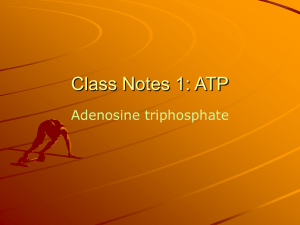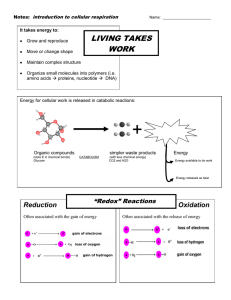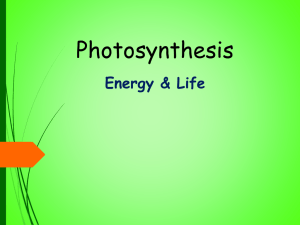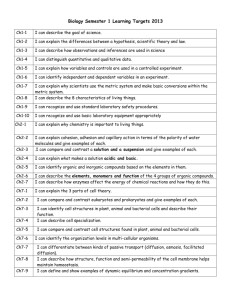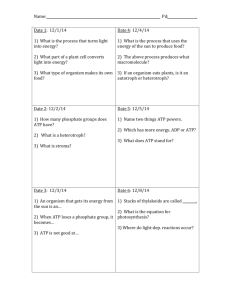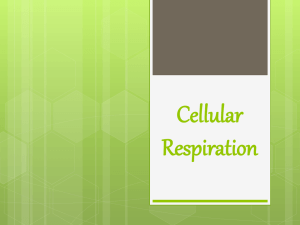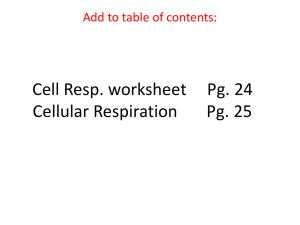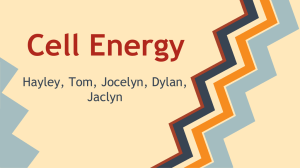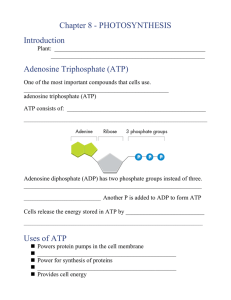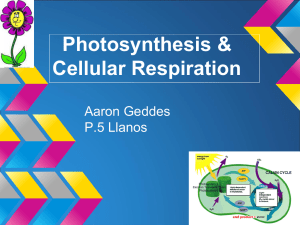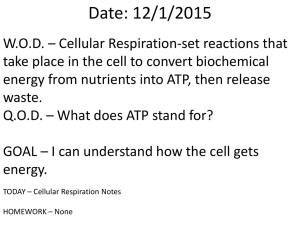8.1 Energy and Life
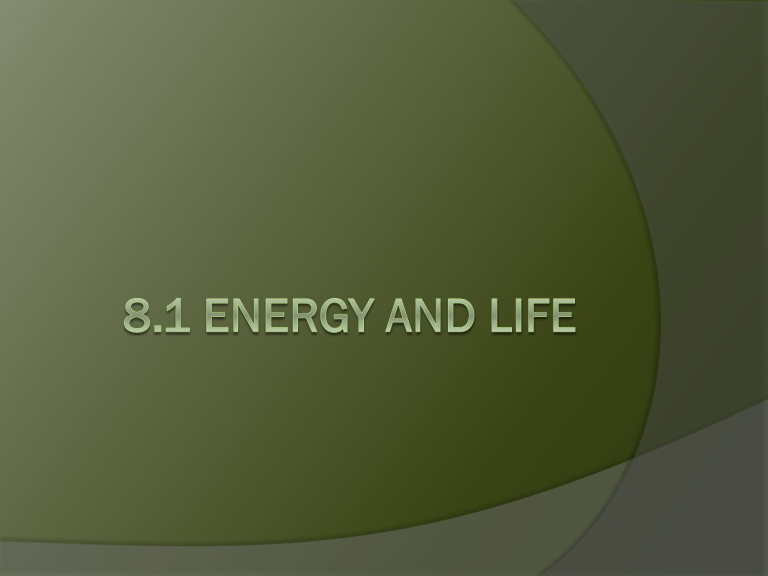
Objectives
Explain the interrelationships between the processes of photosynthesis and cellular respiration comparing and contrasting photosynthesis and cellular respiration reactions.
Determine what factors affect the processes of photosynthesis and cellular respiration (i.e., light intensity, availability of reactants, temperature).
Questions
What ultimately provides energy for living things?
What provides energy for us?
Autotrophs and Heterotrophs
Plants and other types of organisms are able to use light energy from the sun to produce food.
What is the difference between autotrophs and heterotrophs?
Give an example of an autotroph.
Give an example of a heterotroph.
Chemical Energy and ATP
Chemical Energy and ATP
As you write you are “burning” fuel.
Living things use chemical fuels.
Adenosine Triphosphate (ATP) – large carbon molecule with THREE PHOSPHATE
GROUPS.
Releasing Energy
When you remove the third phosphate from ATP a large amount of energy is released.
Enough energy for active transport, protein synthesis, and muscle contraction.
(Remind me to show you a picture of a guy with too much ATP/Steroids)
Storing Energy
POP QUIZ – If adenosine triphosphate loses a phosphate, is it still ATP?
Then what is it?
(Adenosine diphosphate or ADP which still has energy…just not as much)
Using Biochemical Energy (pg. 203)
Fully Charged Battery
Partially Charged
Battery
Closure
We have completed 8.1.
Photosynthesis & Cellular Respiration
Vocabulary Worksheet.
We’ll continue with section 8.2 tomorrow.
Any questions or comments for the good of the cause?



